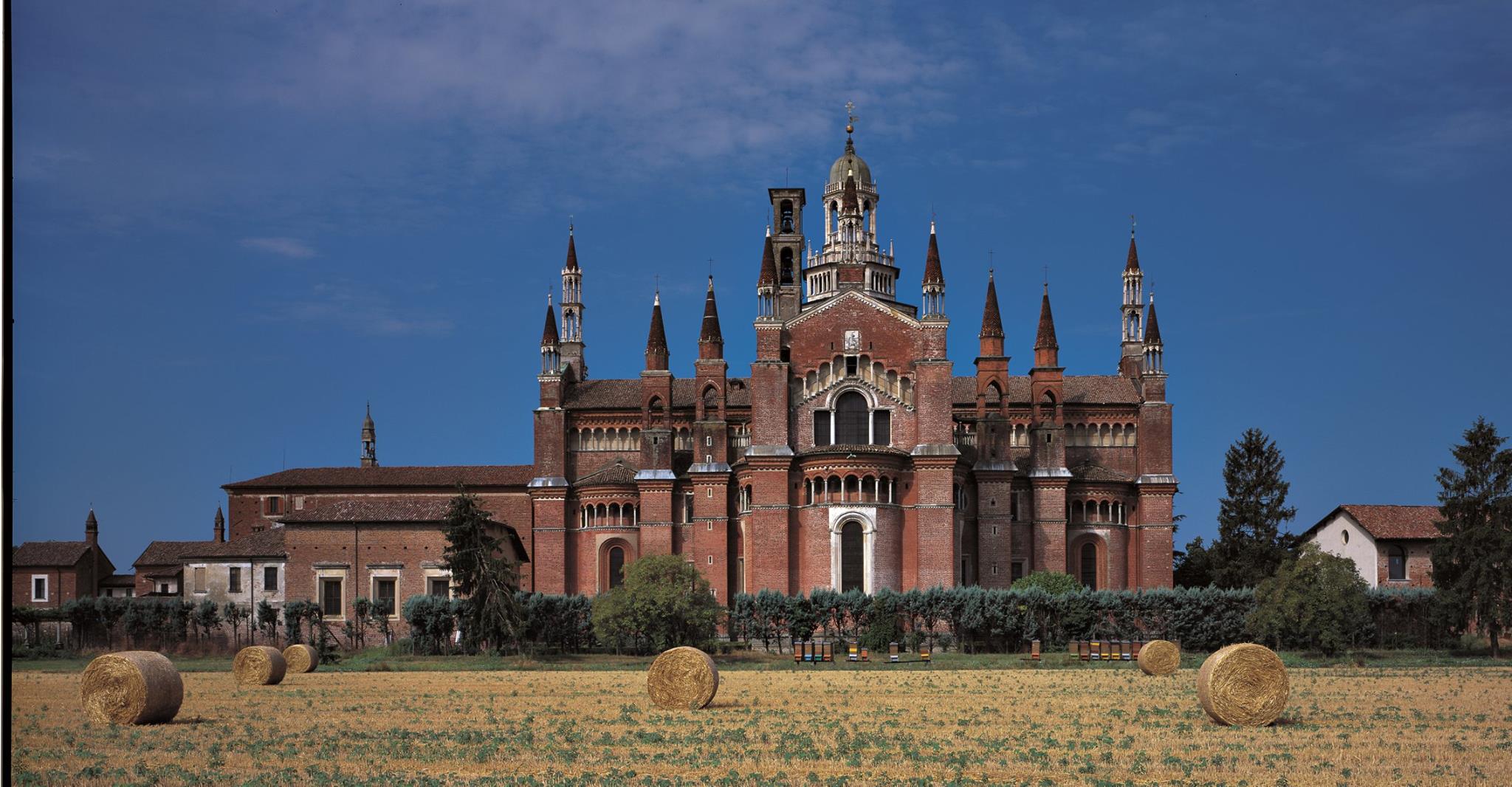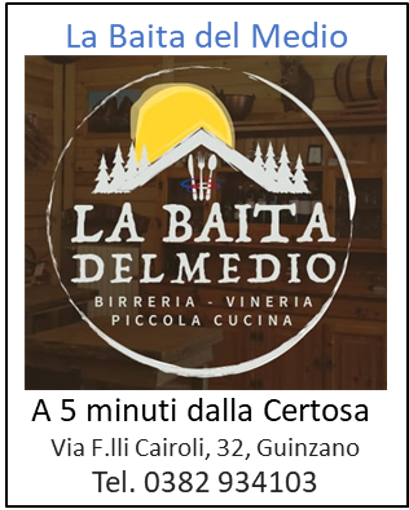Ringed by woods, the Certosa shined with all its brightness in the sunny days or muffled in the misty ones like a “Spirited Away” with her rooftops filled with watchtowers and smoking chimneys.
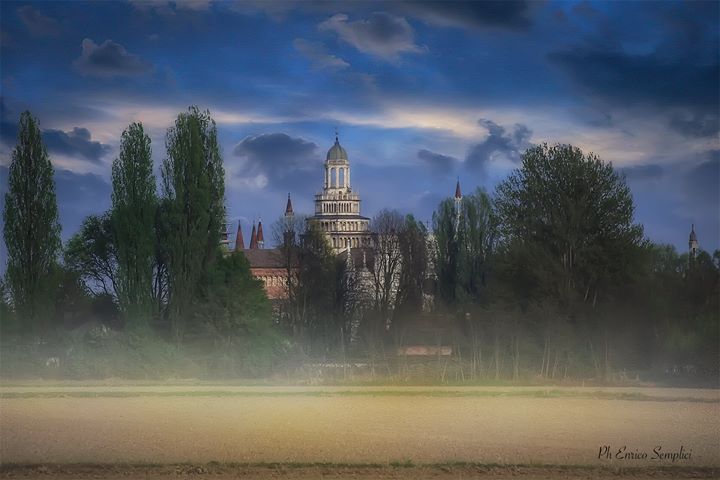
PANORAMIC VIEW OF CERTOSA DI PAVIA’S LANTERN (TIBURIO)
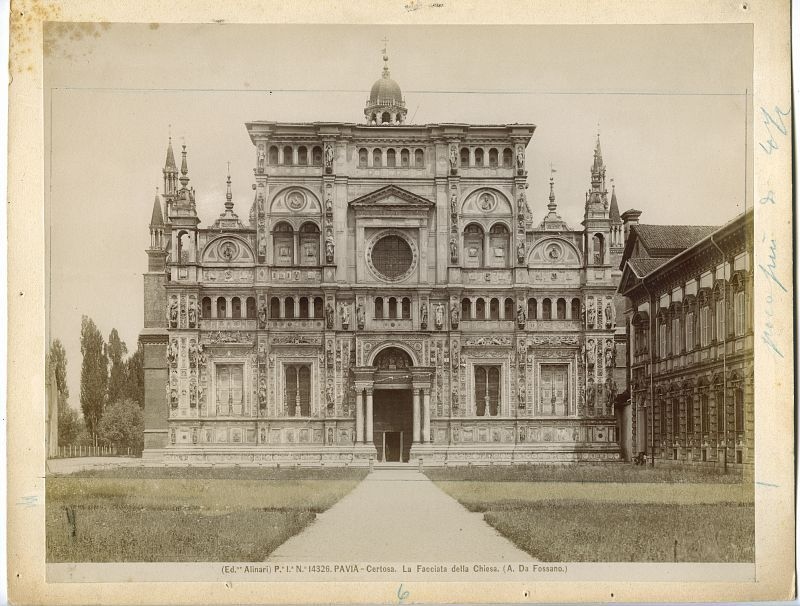
The Certosa di Pavia (The Monastery of Pavia) is a juxtaposition that finds balance in the beautiful work of arts made in 1396 by Gian Galeazzo Visconti thanks to the help of the most famous architects and artists of his time.
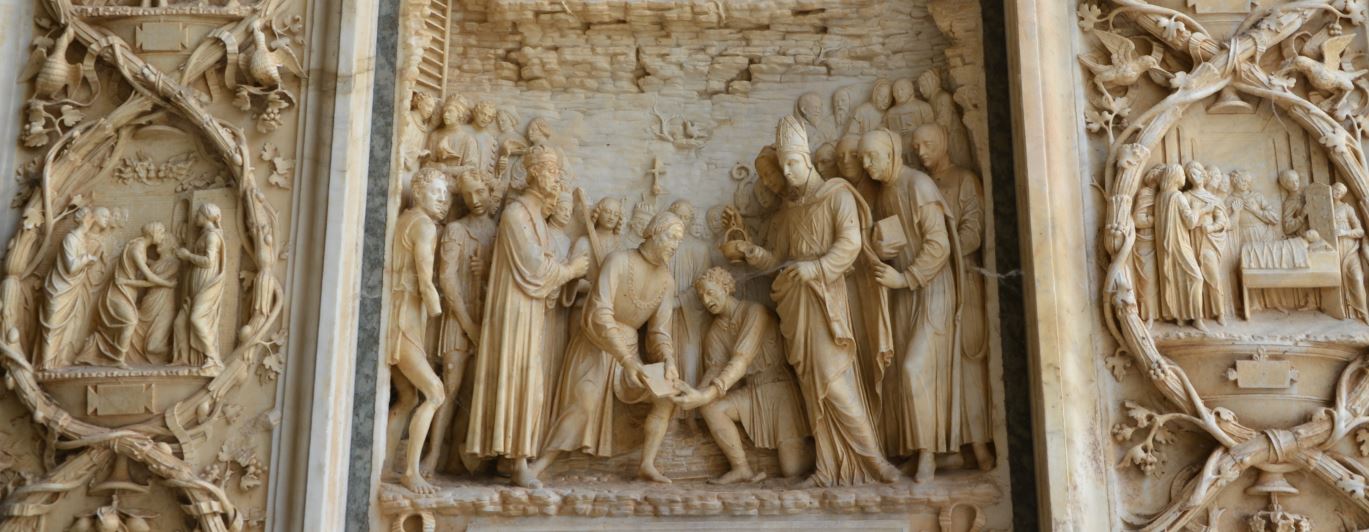
CATHEDRAL ENTRANCE – LOW-RELIEF FOUNDATION STONE LAYING
On Aug. 27, 1396 a jubilant crowd met in an area next to the hunting ground of Pavia Castle where Gian Galeazzo Visconti and his three sons placed the foundation stone of the Certosa della Madonna delle Grazie, a project born from Galeazzo’s wife, Caterina, pledge allegiance to God.
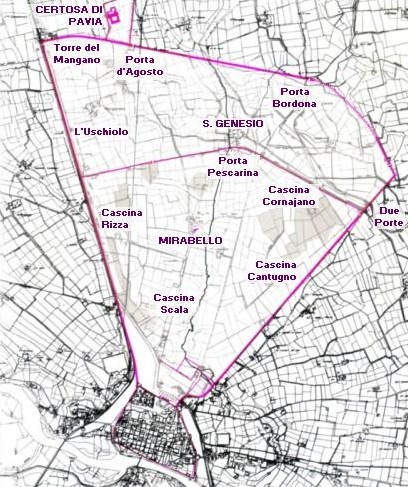
VISCONTI ANCIENT HUNTING GROUND PARK
The building work not only went on for many years after Sforza Family who succeeded to Visconti Family, but also disturbed the first priests who had to live in the middle of a “Carrara Cutters” demolition site. Nevertheless once the last of the scaffoldings was removed, the Certosa was born in all its glory.
On the marmoreal innocence of his mottled pink and the ancient green front, sculptors and architects drew profiles of angels and monarchs, statues of saints, patriarchs and prophets; however, despite the complexity of the overall structure, they were able to give the Certosa a good airing.
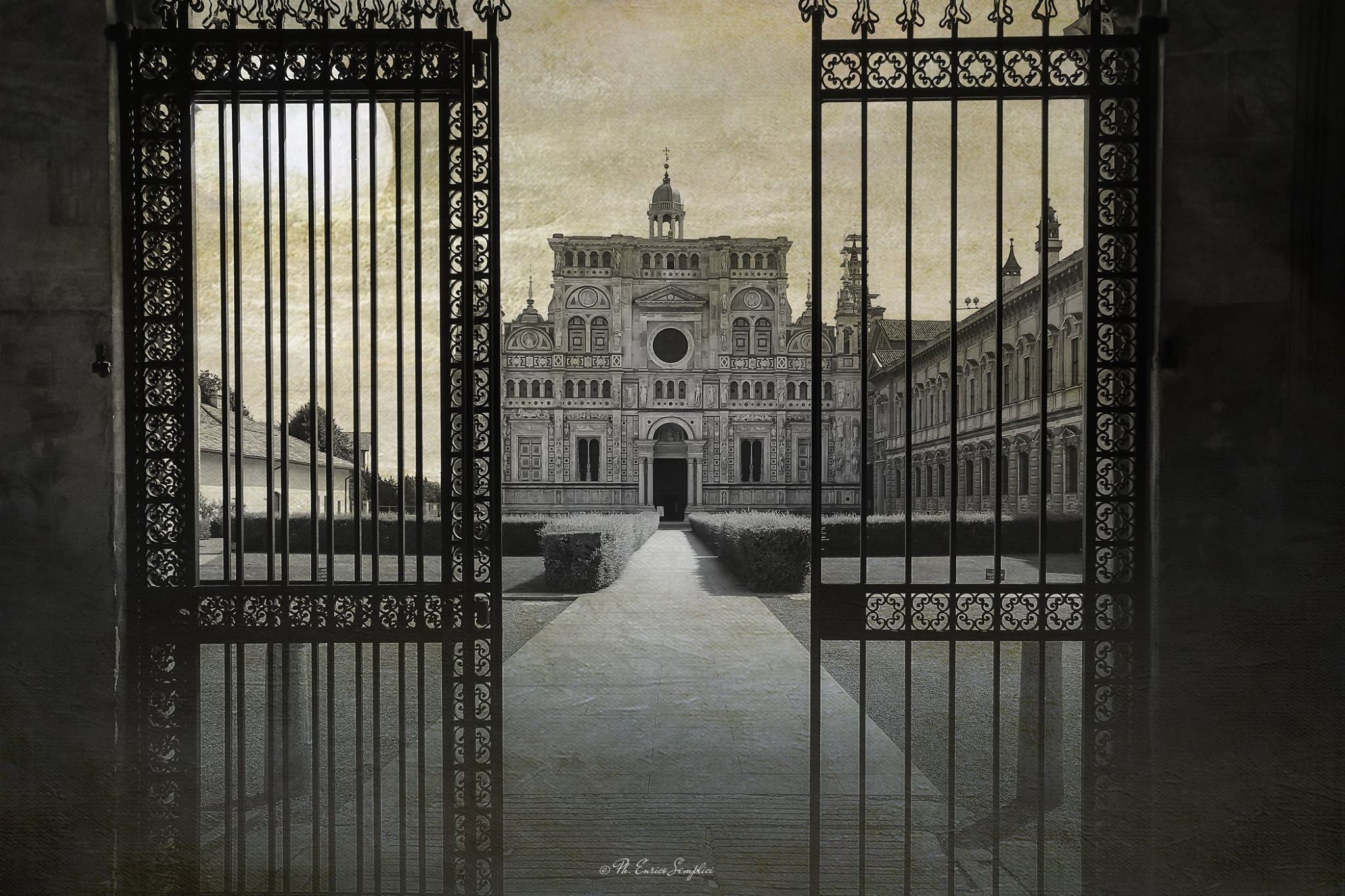
FACADE VIEW FROM THE VESTIBULE
Entering the Certosa you have the sense get in a corner of Heaven.
Your eyes will be graced by stars painted in the ceiling, by stars that adorn the floor of the vestry and by stars that decorate presbytery tiles.
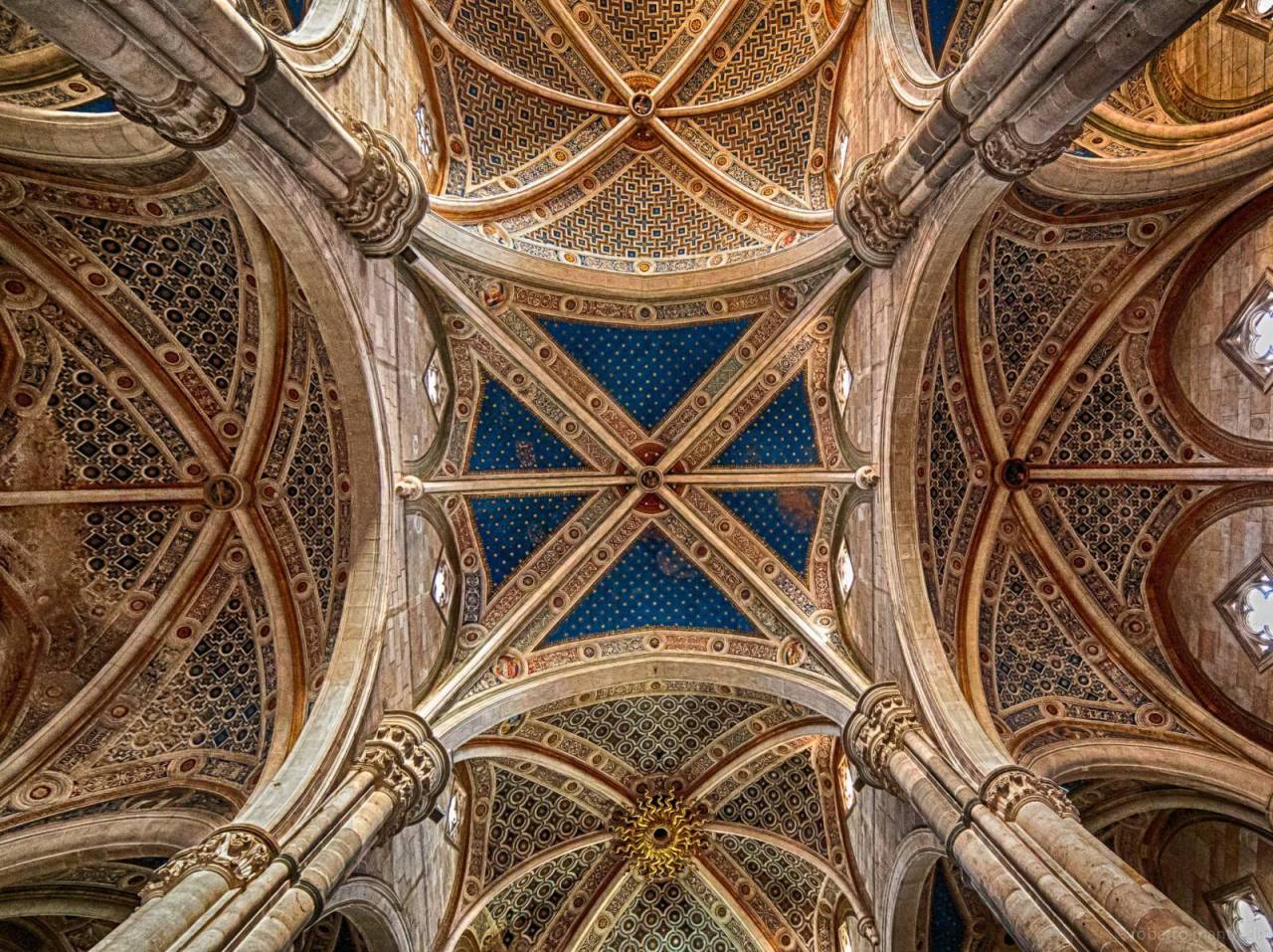
THE VAULTS OF THE CENTRAL NAVE OF THE CHURCH
The tiles on either side of the aisle are things of rare beauty which inlay the vestments made by Sacchi Brothers from Pavia in the 1600s.
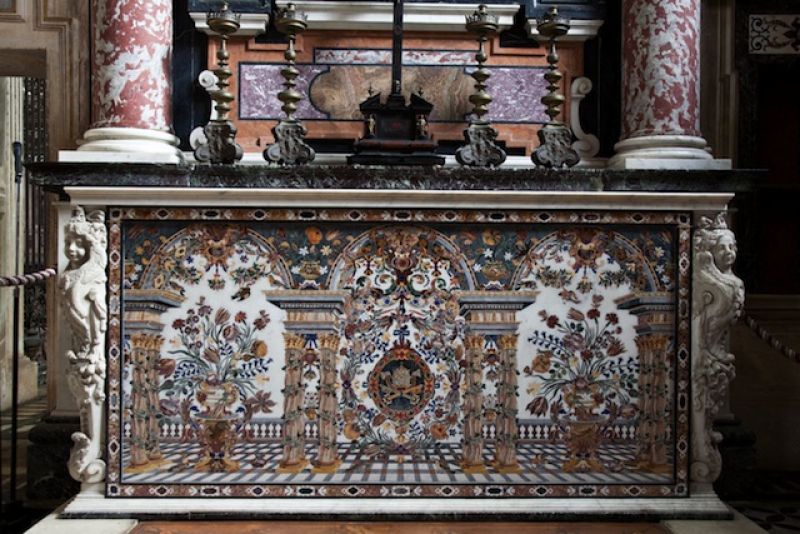
INLAID ALTAR (PALIOTTO)
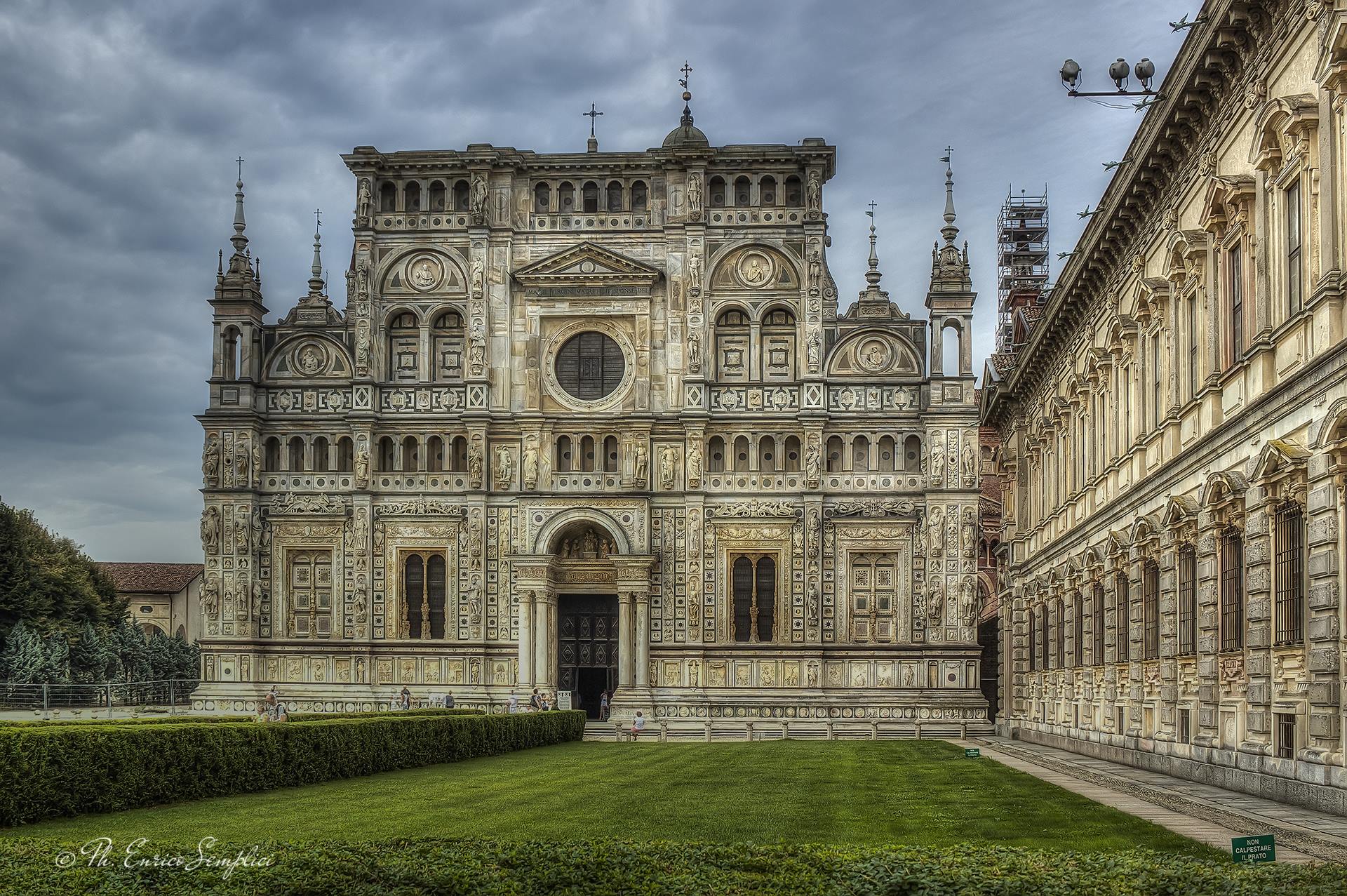
CERTOSA DI PAVIA – THE FACADE
The paintings of the Certosa such as the “Padre eterno benedicente” by Perugino, the Dottori della Chiesa, Santi and Evangelisti by Bergognone create an intimate atmosphere, while the figures painted in the windows by the priests appear suddenly from a door ajar among the frescoes of the chapels.
The finesse of the colors along with the benign look of the faded pink and grey figures depicted in the paintings immediately establishes a confident atmosphere.
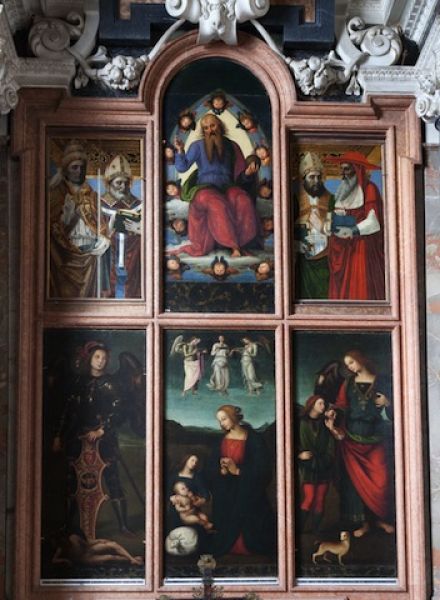
POLYPTIC- PADRE ETERNO BENEDICENTE
Figures painted by the priests that appear suddenly from a door ajar among the frescoes of the chapels track us too like ancient guardians who look out the trompe-l’oil windows by means of an illusionary perspective.
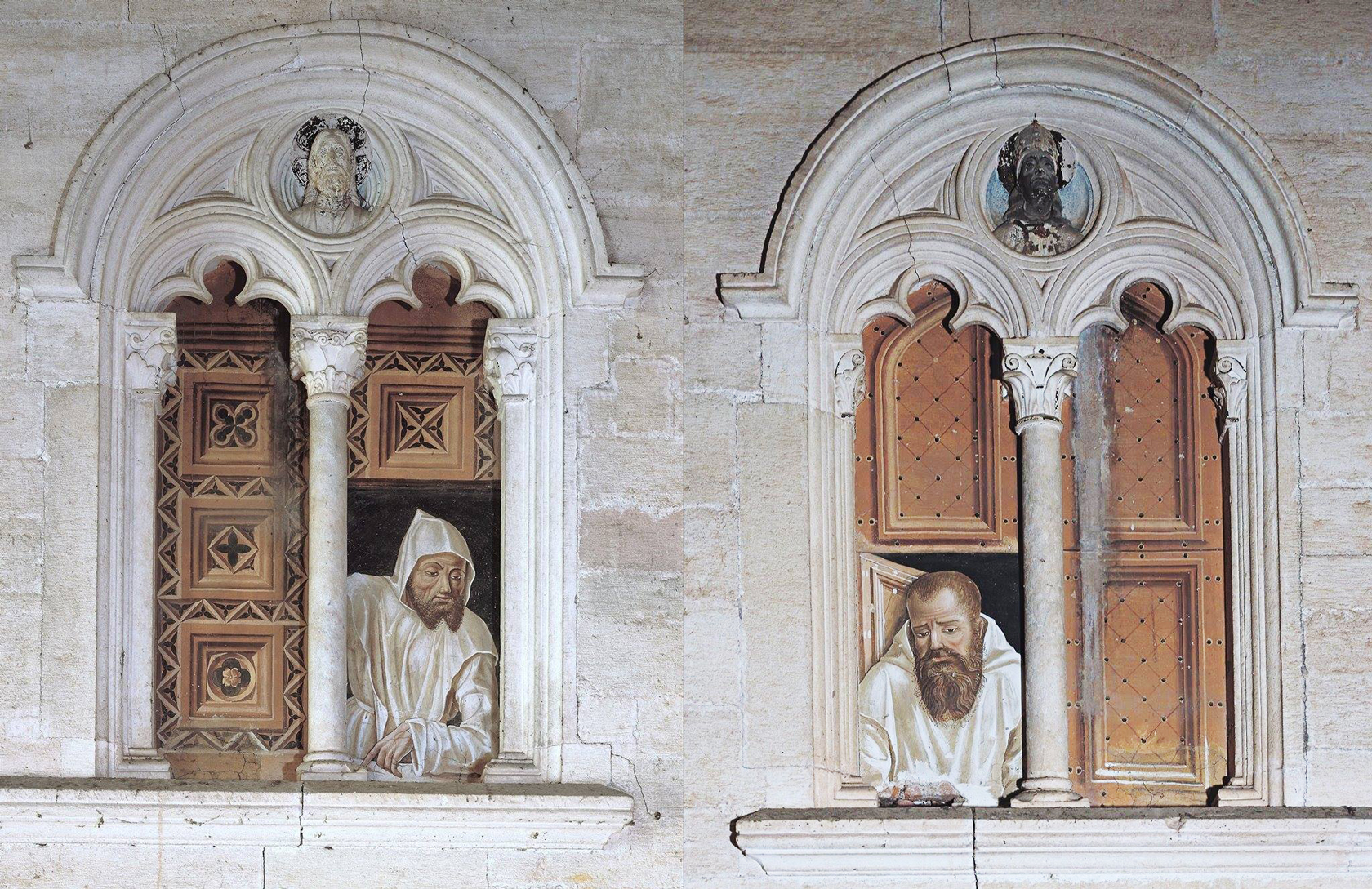
FRIARS FACING (trompe-l’oil) – CENTRAL NAVE
The transept beyond the aisle keeps the burial cairns of the two patrons of the Certosa:
While the Northern Ludovico il Moro and Beatrice D’Este’s sculptures carved with realism by Cristoforo Solari make us walk slowly to prevent a breath of wind raised by our passage from mess up the marble clothes,
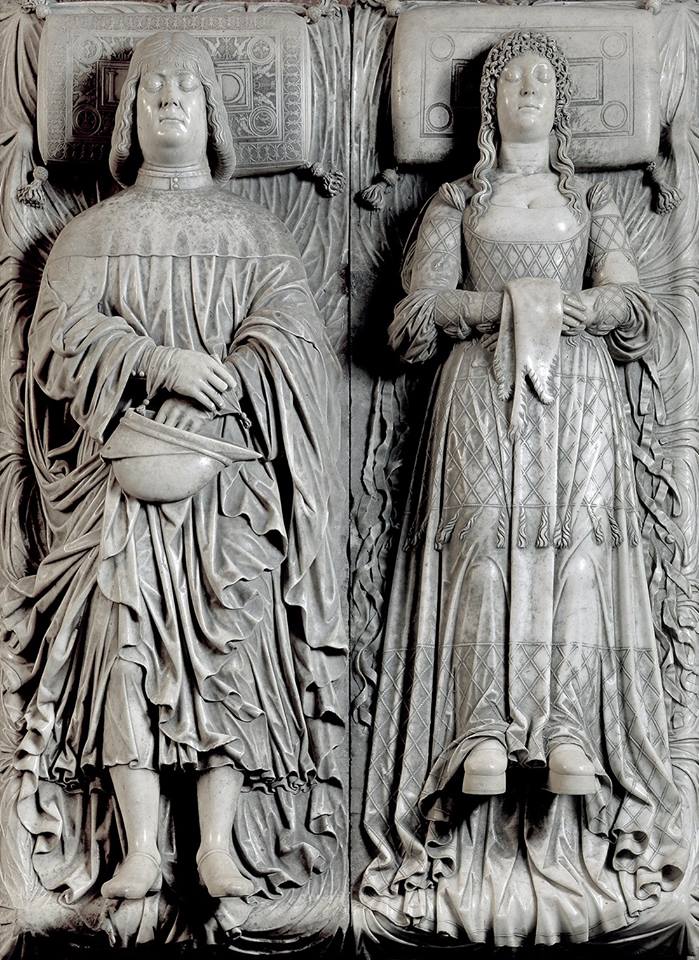
MEMORIAL OF LUDOVICO IL MORO AND BEATRICE D’ESTE
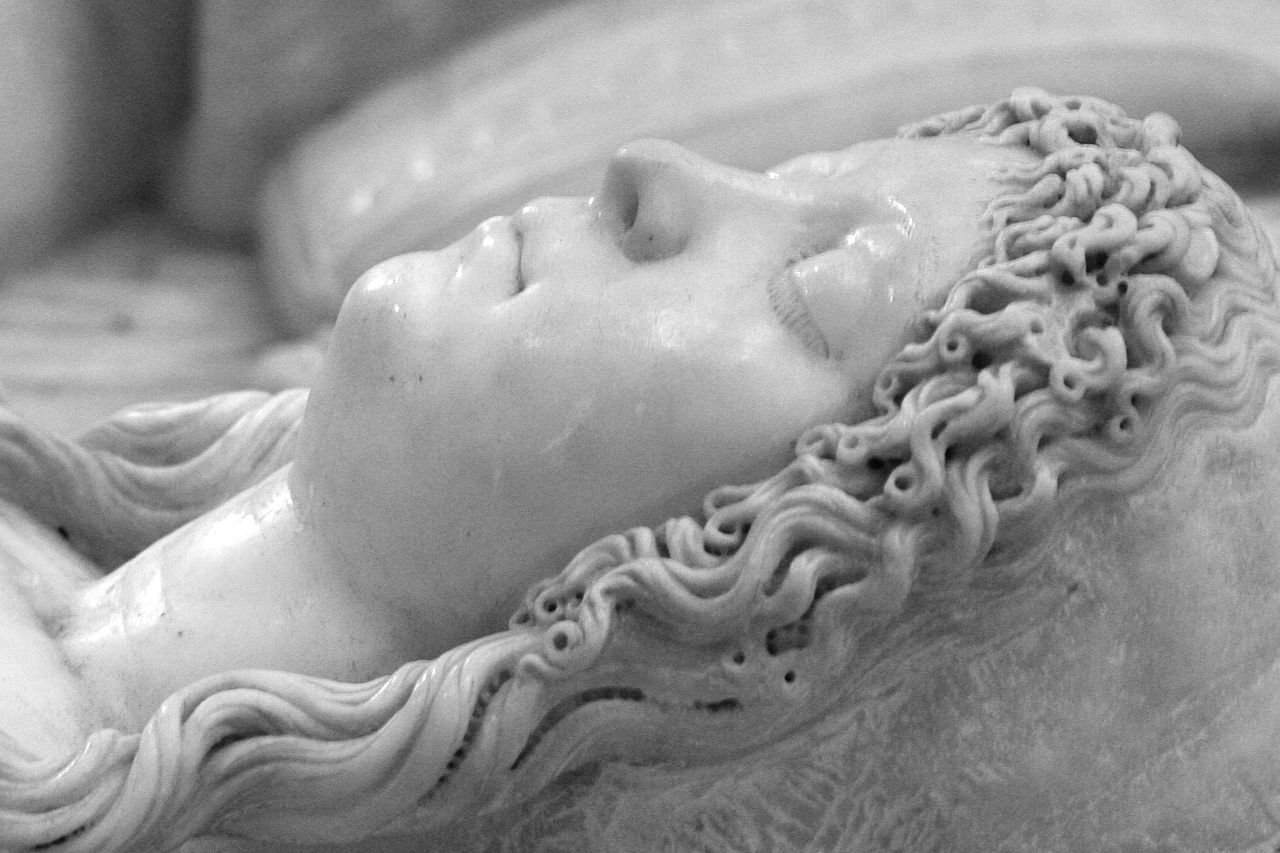
MEMORIAL OF LUDOVICO IL MORO AND BEATRICE D’ESTE – DETAIL
Giangaleazzo Visconti’s body rest in peace under the gaze of Fama and Vittoria statues in his monumental tomb designed by Gian Cristoforo Romano placed to the south of the transept, protected by a Tabernacle which portrays various periods of his life.
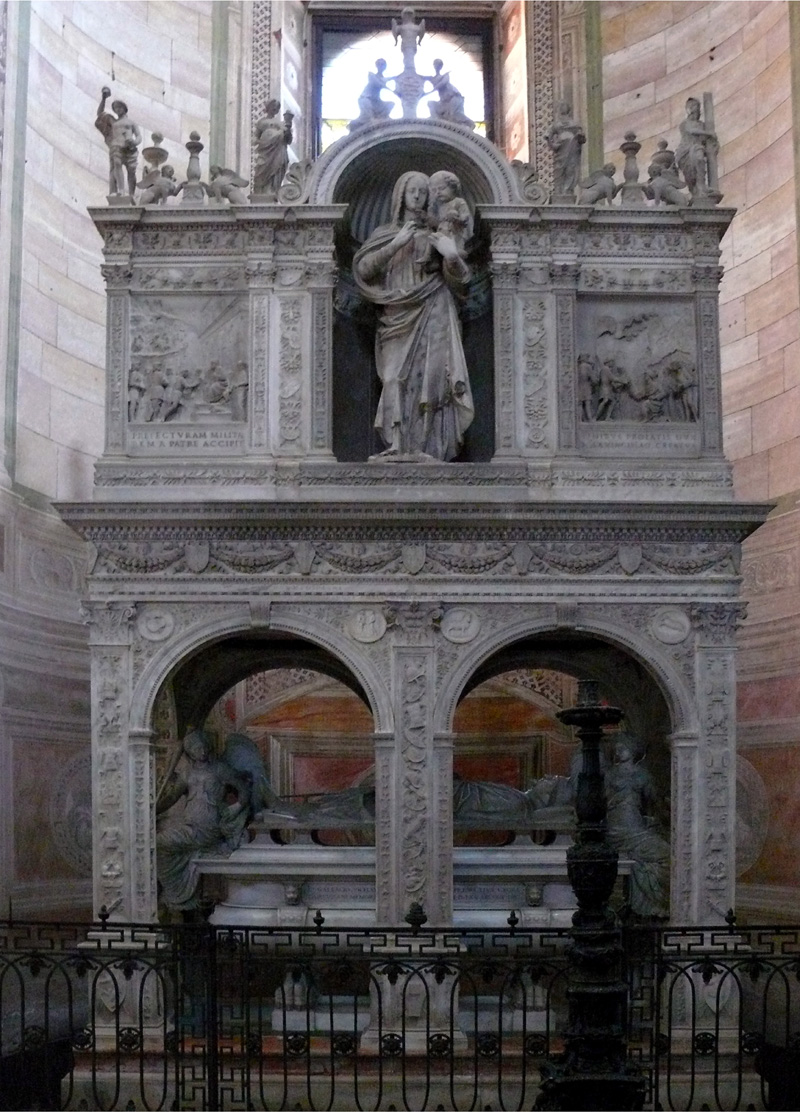
THE SEPULCHRAL MONUMENT OF GIAN GALEAZZO VISCONTI
It is certainly thanks to the Duke’s financial support that in 1400 the prior of the Certosa was able to spend 1,000 gold florins to commission a true masterpiece to Baldassarre degli Embriachi: a triptych that the artist carved out in the finest wood, hippos’ teeth and turtle’s colored bones. The triptych, which is kept in the sacristy, features three arches that depict the door of a gothic cathedral placed on a maze of golden inlays that show several Virgin Mary, Jesus Christ, Balaam the fortune teller and three Wise Men’s life tales. In the midst of a huge battle, the crest of Visconti’s Family is shown on the shield of a soldier while a Holy Bible made of bone depicts The Last Supper.
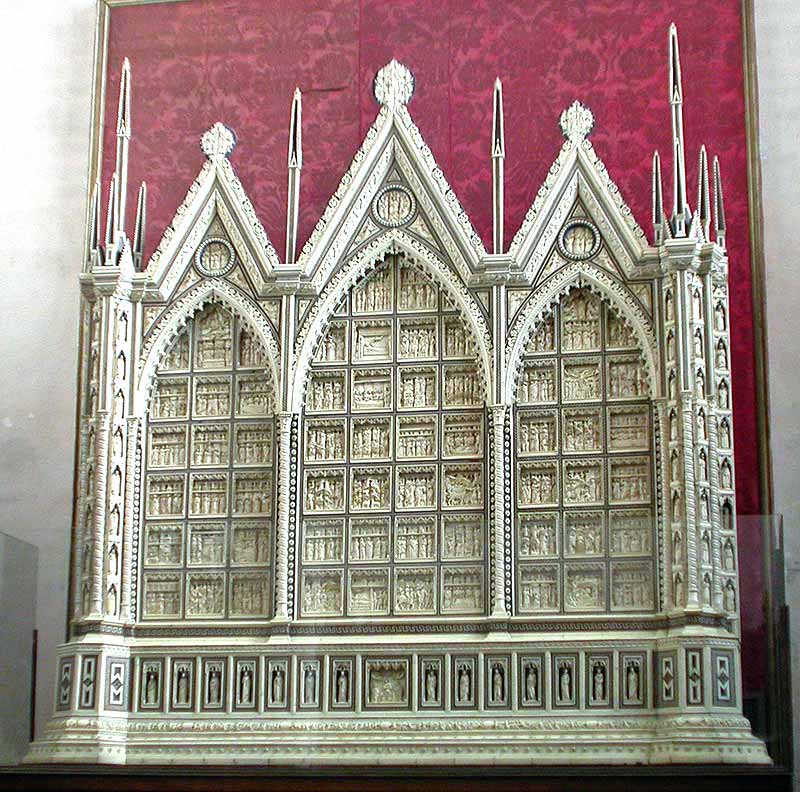
THE ALTARPIECE – IVORY TRIPTYCH
The Last Supper is also featured in the bas-relief of the Presbytery and in the big fresco in the cenaculum of the refectory.The Sacred Scrolls are pictured everywhere in the Certosa in the form of the Creator caught shaping the first man, in that of Adam and Eve who look each other like two tender lovers before succumbing in front of the pain and the fatigue and finally in that of the Three Wise Men who bow to Baby Jesus.
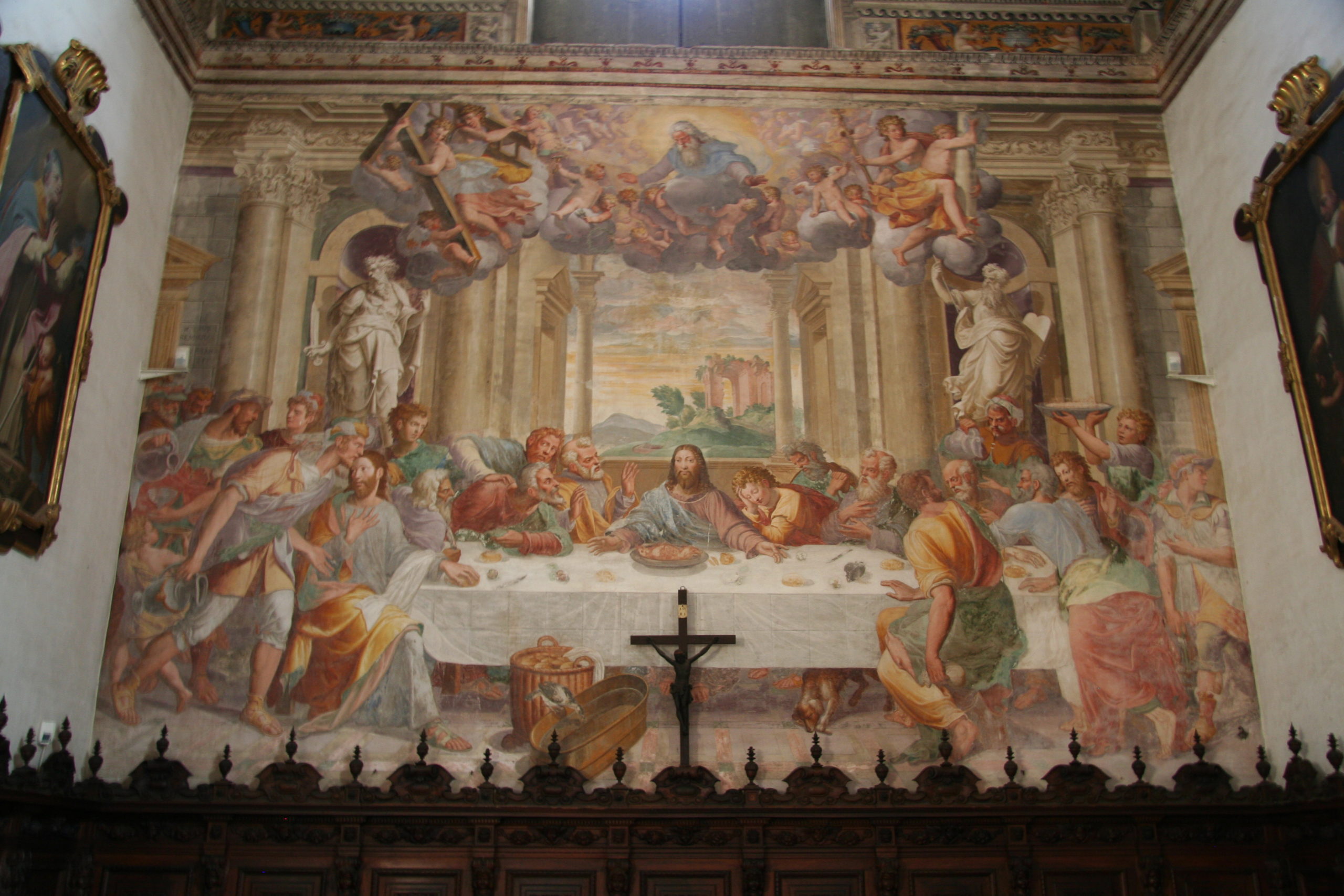
THE LAST SUPPER – REFECTORY
The Sacred Scrolls are pictured everywhere in the Certosa in the form of the Creator caught shaping the first man, in that of Adam and Eve who look each other like two tender lovers before succumbing in front of the pain and the fatigue and finally in that of the Three Wise Men who bow to Baby Jesus.
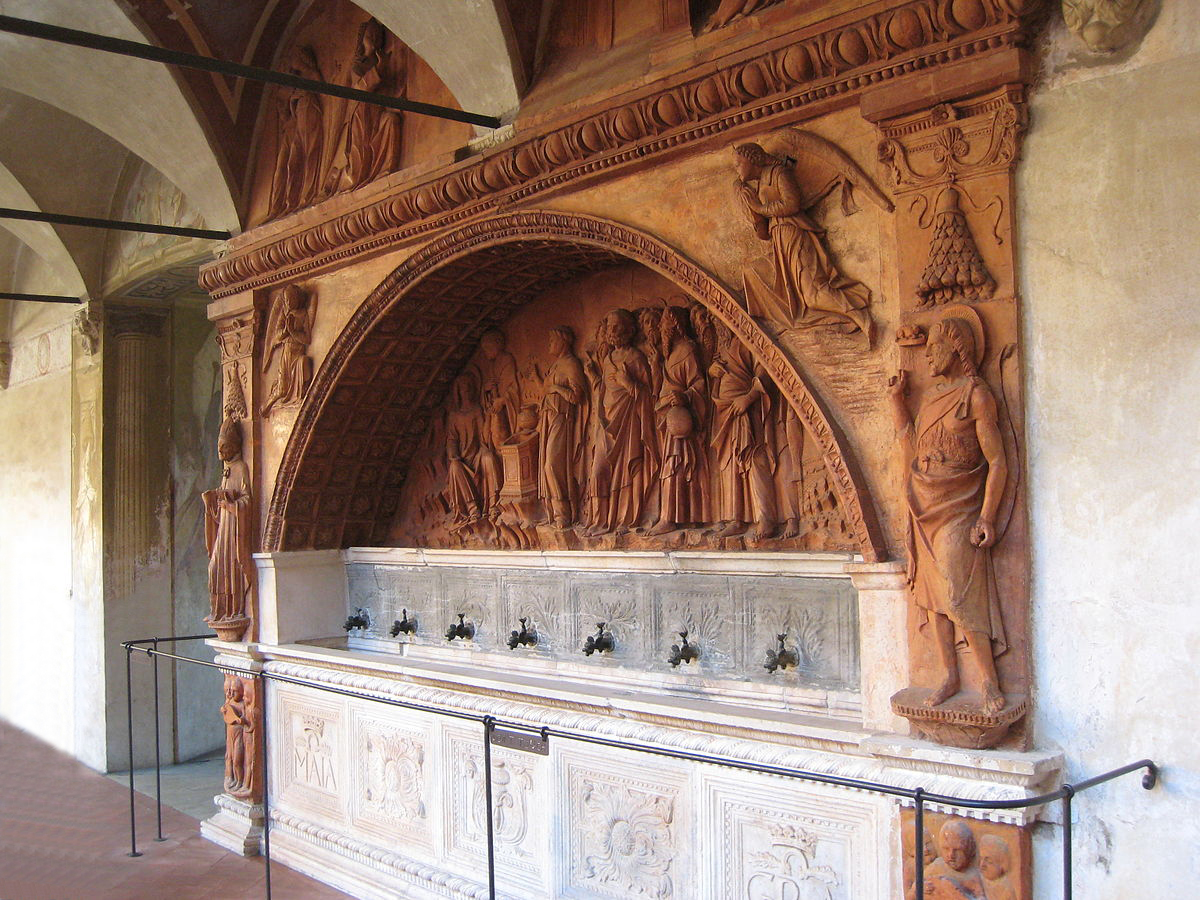
THE WASH HOUSE IN THE SMALL CLOISTER
Most of the celestial creatures that dwell in the Certosa are Angels. There is the naughty Angel who proudly shows a corsage from the vault of Santa Caterina’s Chapel, there is the curly Angel who smile from closets of the New Sacristy, then the Angels who climb the clouds or wears helmet and armor to fight against the dragon in the altar of San Michele Archangel’s Chapel.
Meanwhile behind the high altar the sun touches the cities inlayed on the wooden backbones of the chorus with warm glares and flashes the stained glass, lighting the kaleidoscope of colors of the Assumption of Virgin Mary.
She is the most solemn among the Virgin Maries who had been depicted in their everyday life by the artists of the Certosa; from the Virgin Mary of the Carpet to the Virgin Mary of the Carnation. From the long blonde hair Virgin Mary in Adoration to the Virgin Mary of the Milk enclosed in a golden sun.
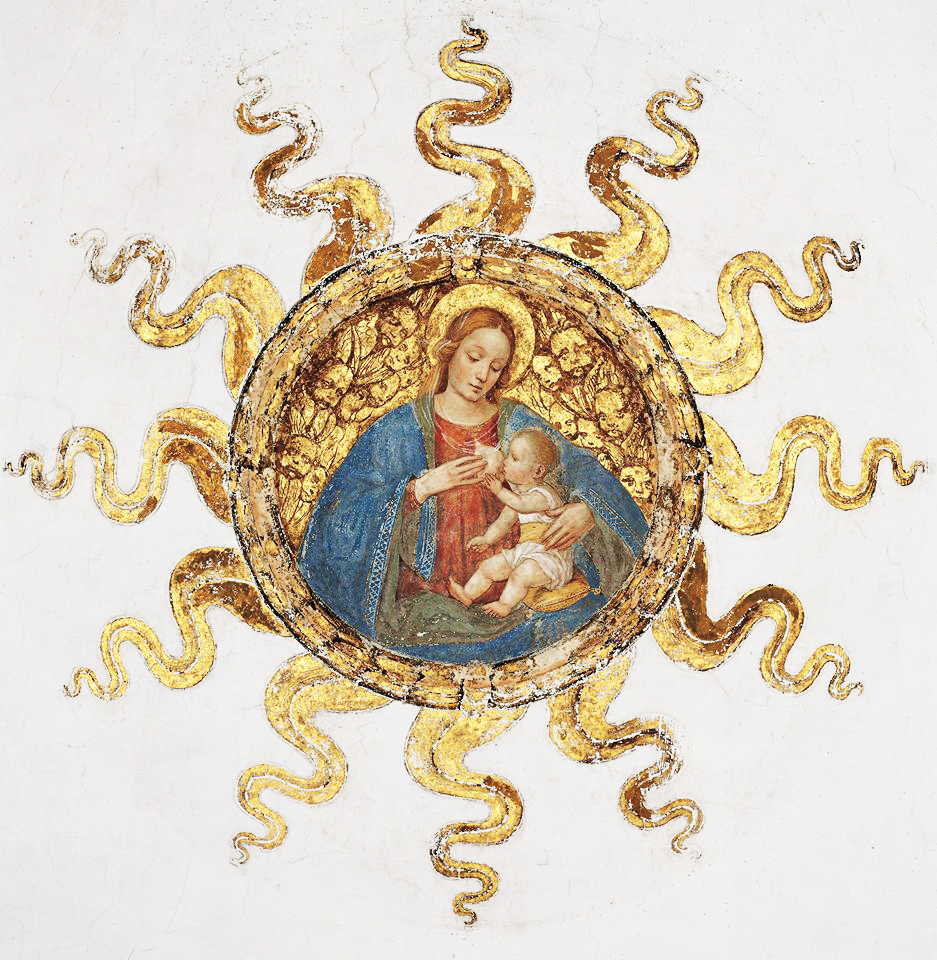
VIRGIN MARY OF THE MILK – REFECTORY
Chalices, tunics and bells are hung in the New Sacristy. As implied by the friezes on the closets, the priests came back to their everyday life. The small cloister along with its green oasis is just a taste of piece and silence.
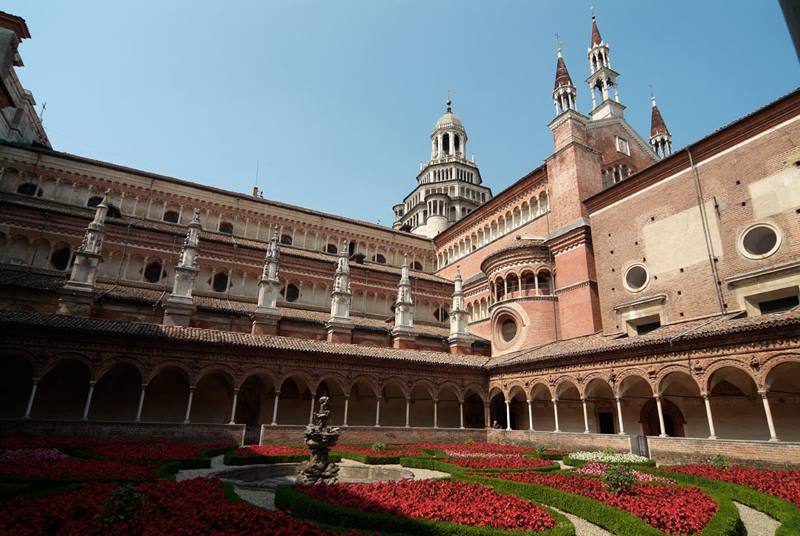
THE SMALL CLOISTER

PASS FROM THE SMALL TO THE GRAND CLOISTER
Monks’ quarters, which are little houses featuring a prayer room and a garden too seed flowers and medicinal plants, face the big cloister built by Guiniforte Solari.
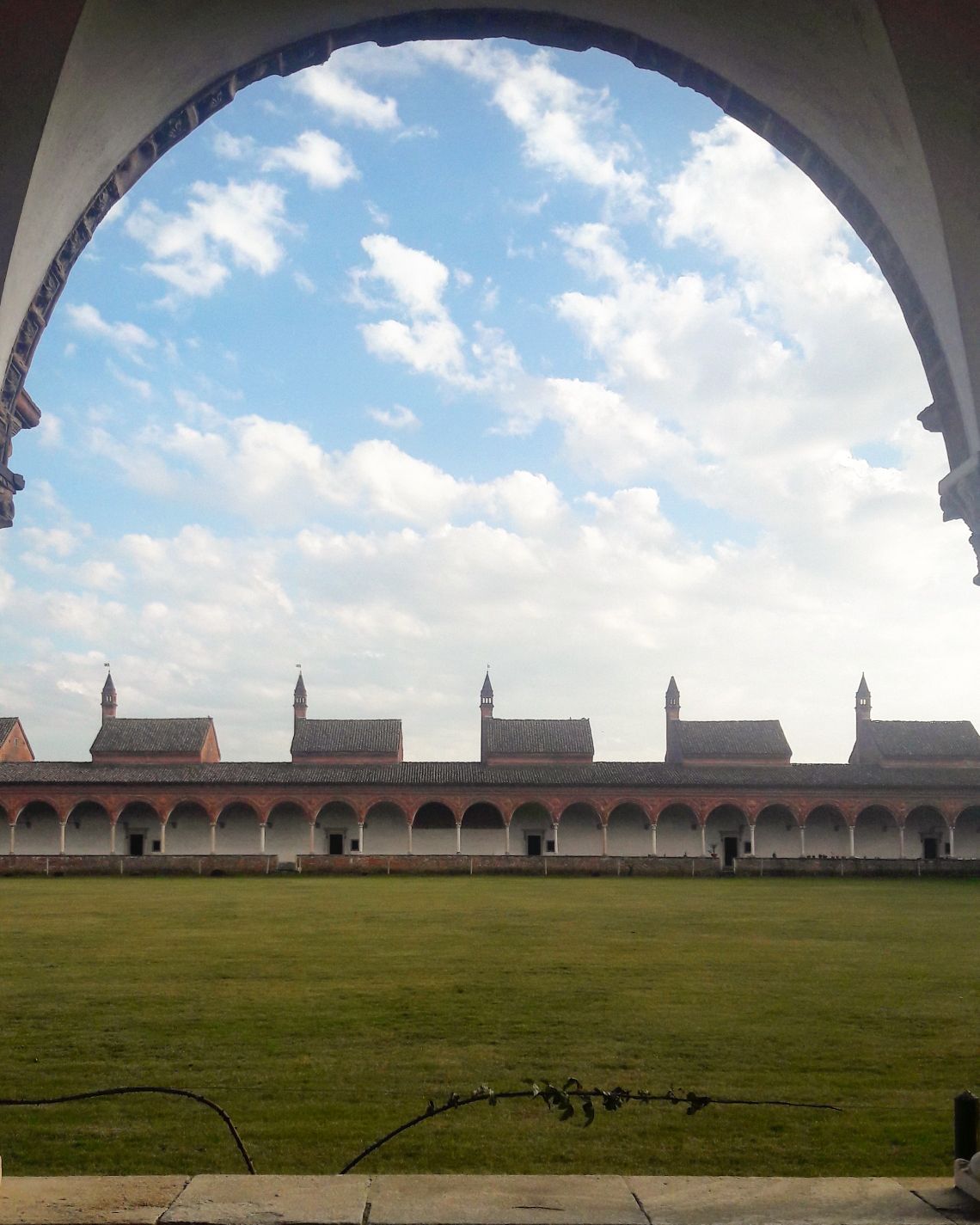
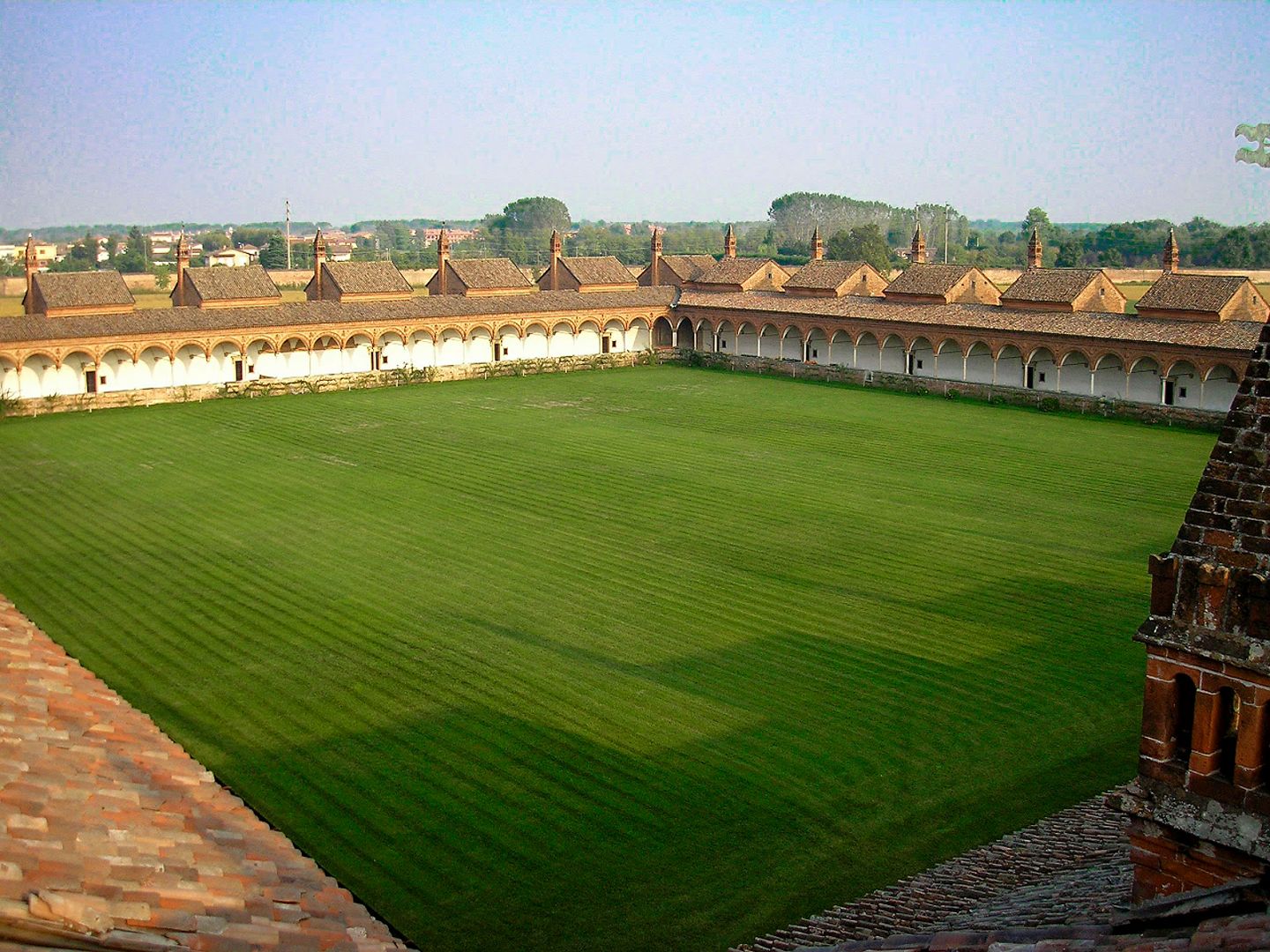
THE GRAND CLOISTER
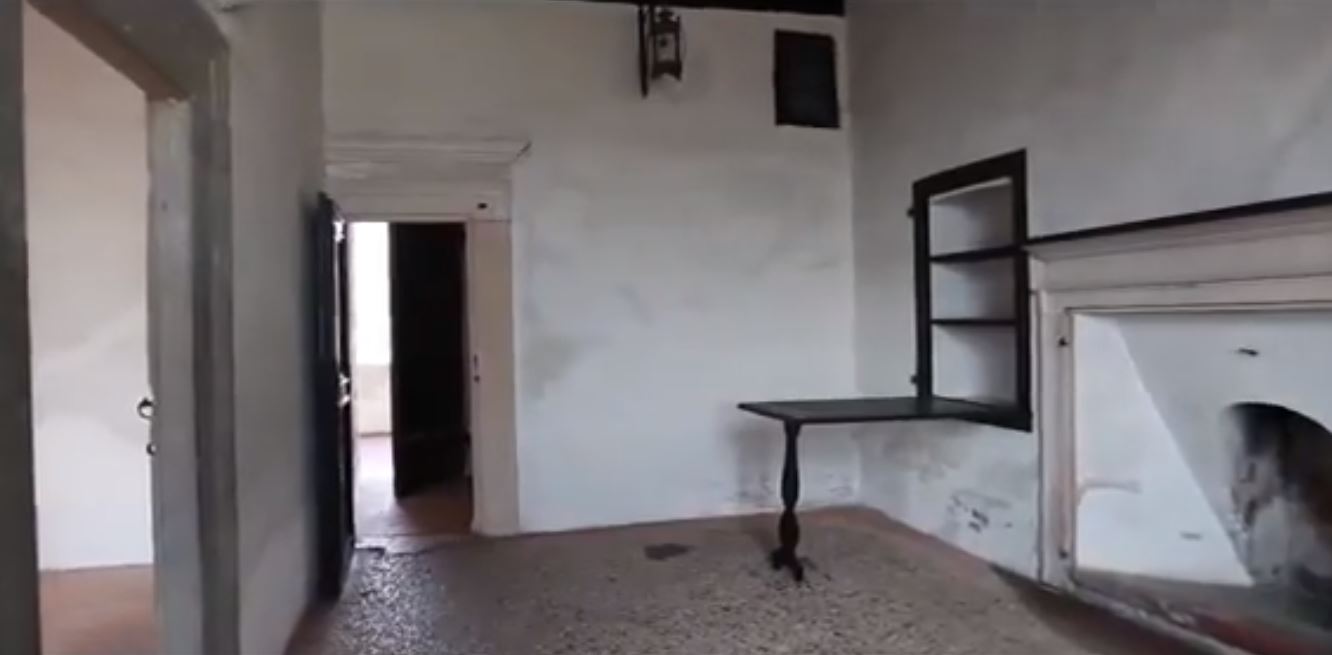
FRIARS’S CELLS – iNTERNAL
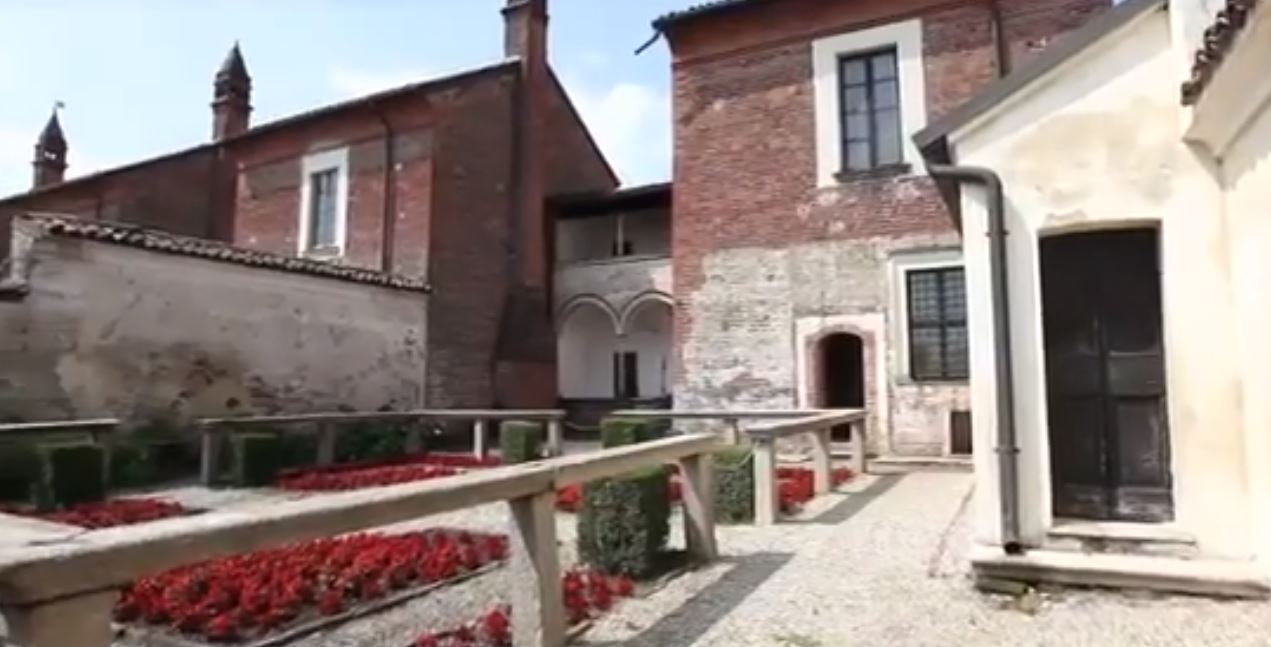
FRIAR CELLS – OUTDOOR GARDEN
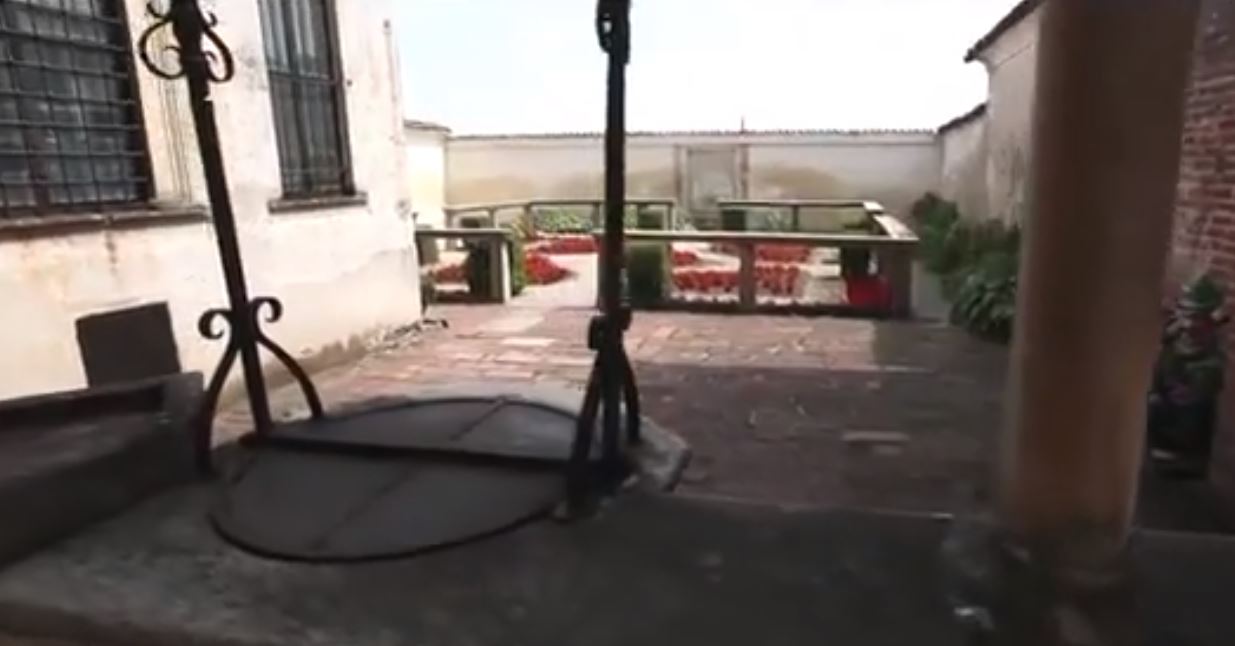
FRIAR CELLS – THE WELL
Actually prayers’ only gaze of the world was a small box of sky along with the shadows of the bows wrapped in the winter fog, ornaments and pottery statues who played in the summer days warming the cloister with their earthy colors.
Butterflies, snails, dragonflies and frogs painted in the frescoes or carved in the ornaments while they climb gravepines seem being sneaked to church from this little piece of countryside.
Probably they sneaked into the scriptorium too to be portrayed from prayers’ brush who worked hardly to transcript chorales and sacred texts. Currently only few examples remain of the precious manuscripts of the library of the Certosa, preyed Napoleon’s troops who didn’t spare Gian Galeazzo’s Tomb.
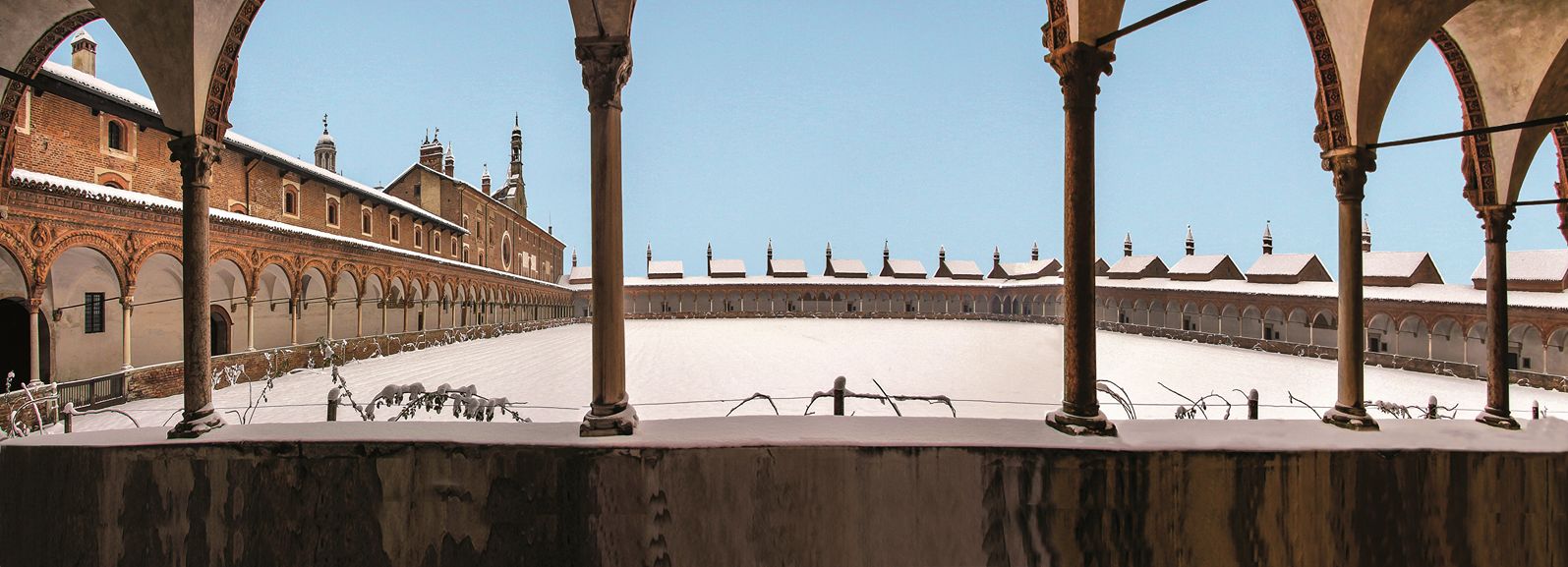
THE GRAND CLOISTER WITH THE SNOW
Before walking down the vestibule and heading towards the exit of the Certosa, let’s give a last look to the cathedral to realize how it is able to juxtapose several art styles.
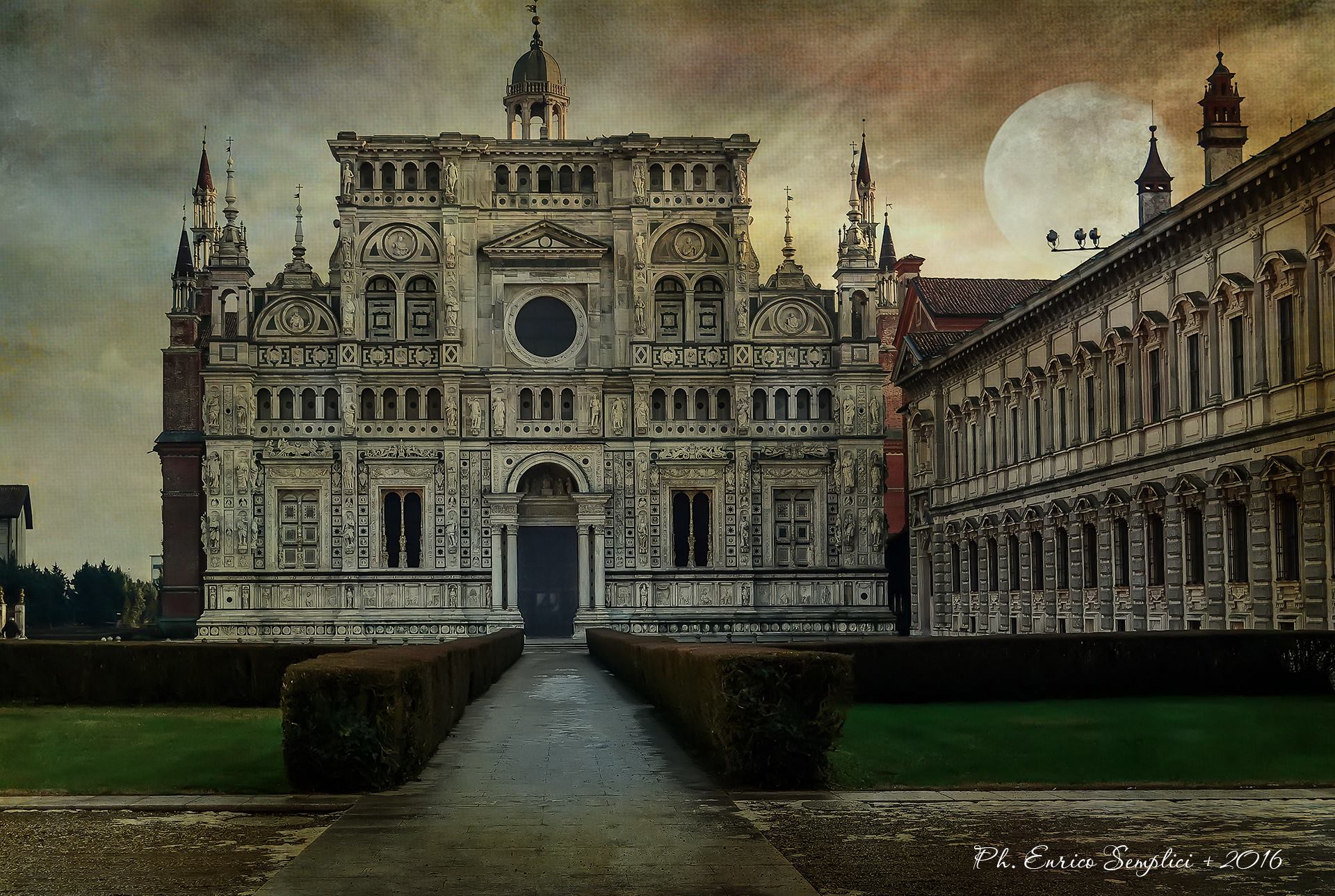
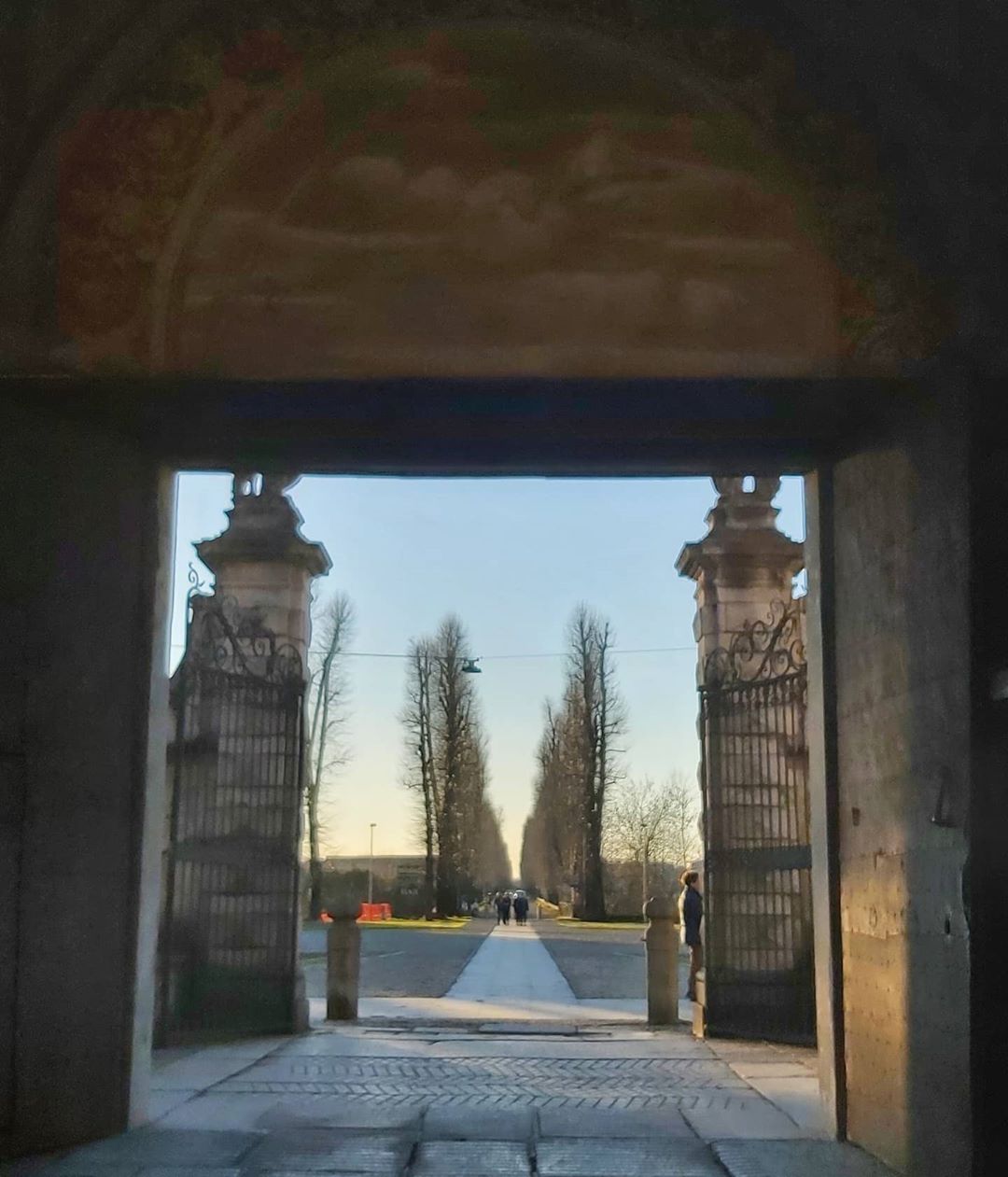
The bush cleared all round, the sounds of the city are closer but as we go away, we keep hearing the whisper of the Certosa, that challenging the ages comes to us: “Gra-Car”, Gratiarum Carthusia.
